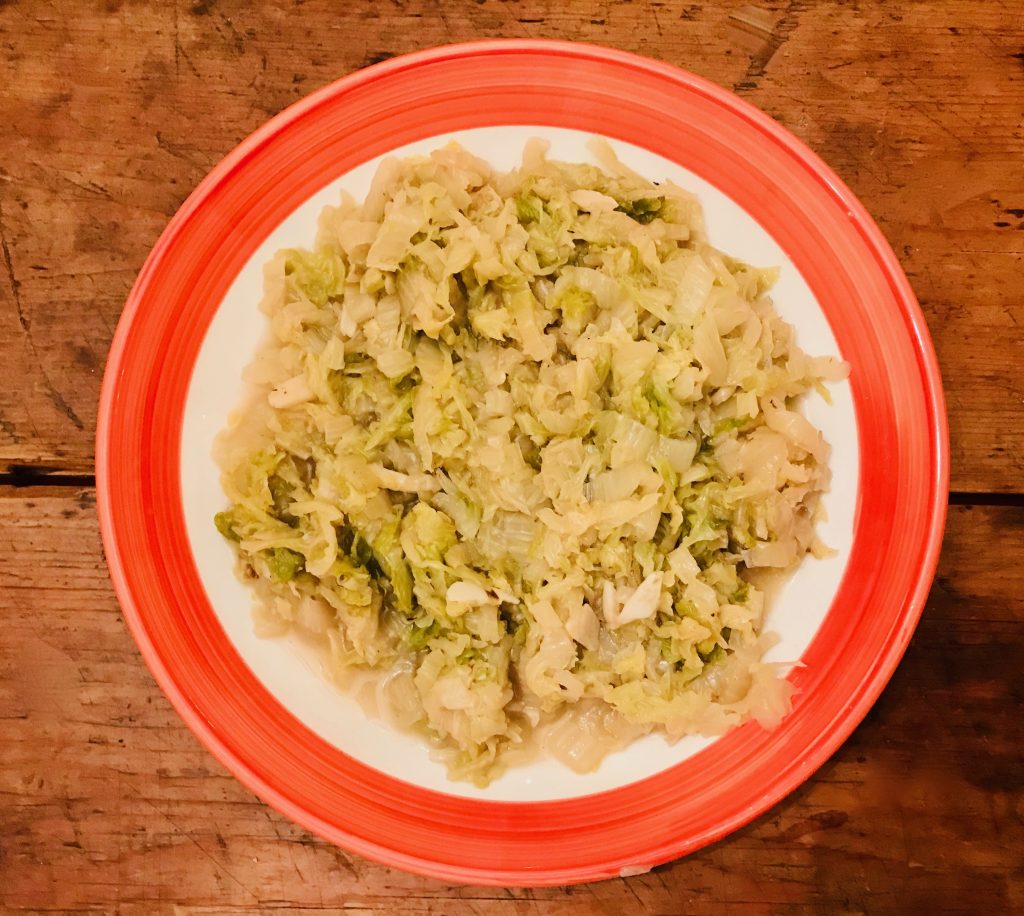While I am NOT a fan of the common cabbage, I love Napa cabbage, which does not smell or taste “cabbage-y”. Its cylindrical-shaped head of tightly packed leaves are longer, softer, mild-tasting and almost sweet when cooked. Napa cabbage is also budget-friendly ($1.29 / pound where I shop), filling and delicious. Bonus: it’s listed as #4 on the Environmental Working Group’s “Clean 15” list of produce least likely to hold pesticide residue.
Also known as Chinese cabbage, Napa cabbage is in the brassica family that includes broccoli, kale and Brussels sprouts. It is an excellent source of vitamin K (beneficial for healthy blood clotting); vitamin C (great for boosting immunity and for fighting inflammation); vitamin B6 (helps detoxify the liver and supports the brain and nervous system); and folate (key in the production of red blood cells and in supporting heart health and the nervous system). It’s also packed with cancer-fighting antioxidants and loaded with fiber, which helps stabilize blood sugar and optimize elimination.
When I cook Napa cabbage, I like to braise it—saute for a few minutes in coconut oil, then add some water, cover, lower heat and let cook about 15 minutes or until the cabbage is soft.

Braised Napa Cabbage with Sesame Oil
1 large head Napa cabbage, end(s) trimmed off and discarded
4 large garlic cloves, thinly sliced
2 teaspoons coconut oil or duck fat
1/2 to 3/4 cup water, or, as needed
Celtic sea salt to taste
1 tablespoon coconut oil or duck fat
2 teaspoons toasted sesame oil
Peel the cabbage leaves from the base (try to keep each cabbage leaf intact). Place all the leaves in a large bowl. Add water to cover. Wash leaves well, drain, and place all cabbage leaves in a colander or salad spinner.
Stack 4 to 5 cabbage leaves on top of one another. To julienne: slice through the stacked cabbage—apx. 1/4-inch thickness—down the length of the stacked cabbage.
Place all julienned Napa cabbage in a large bowl.
To cook: Heat 2 tablespoons of olive oil or duck fat in a Dutch oven or large heavy-bottomed pot over medium-high heat. When olive oil or duck fat is hot—but not smoking—add garlic and stir quickly, about 30 seconds.
Add julienned Napa cabbage, stirring well to coat with olive oil or duck fat, about 3 minutes. When cabbage begins to stick, add 1/2 cup water (or more water, as needed). Let the mixture come to a boil; reduce heat to low, cover and cook another 15 minutes, or until the cabbage is soft. Lightly sprinkle cabbage with Celtic sea salt. Stir in 2 teaspoons of toasted sesame oil. Using a slotted spoon, transfer Napa cabbage to a serving bowl.
Note: During cooking, Napa cabbage can release a lot of water. That’s fine. Since nutrients leach into water, I like to drink warm Napa cabbage “juice”, which I find slightly sweet-tasting, soothing and detoxifying.


